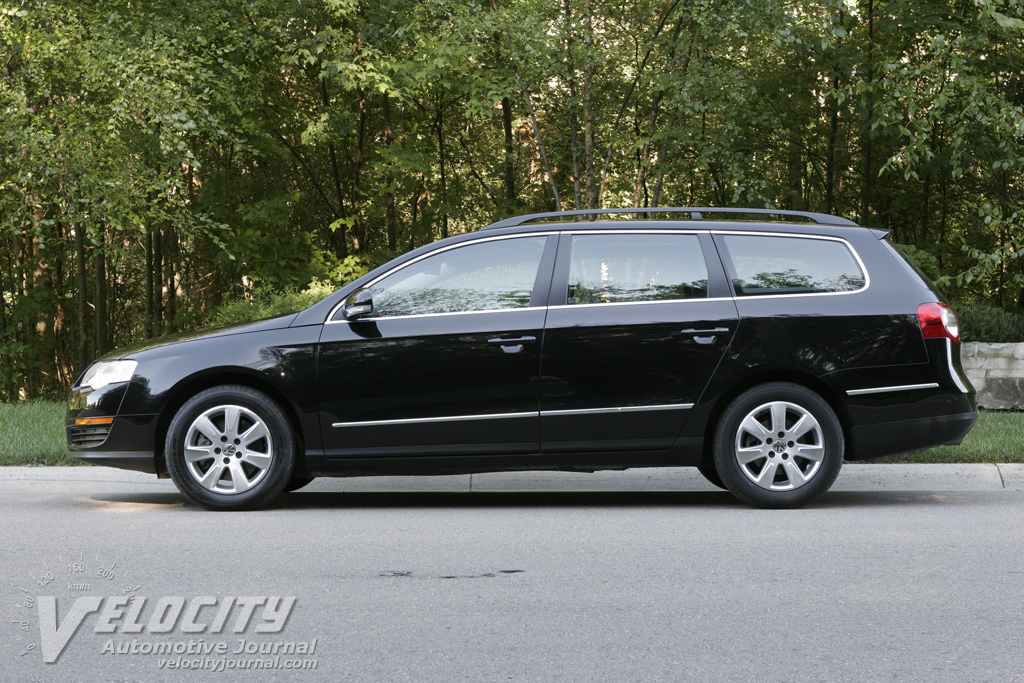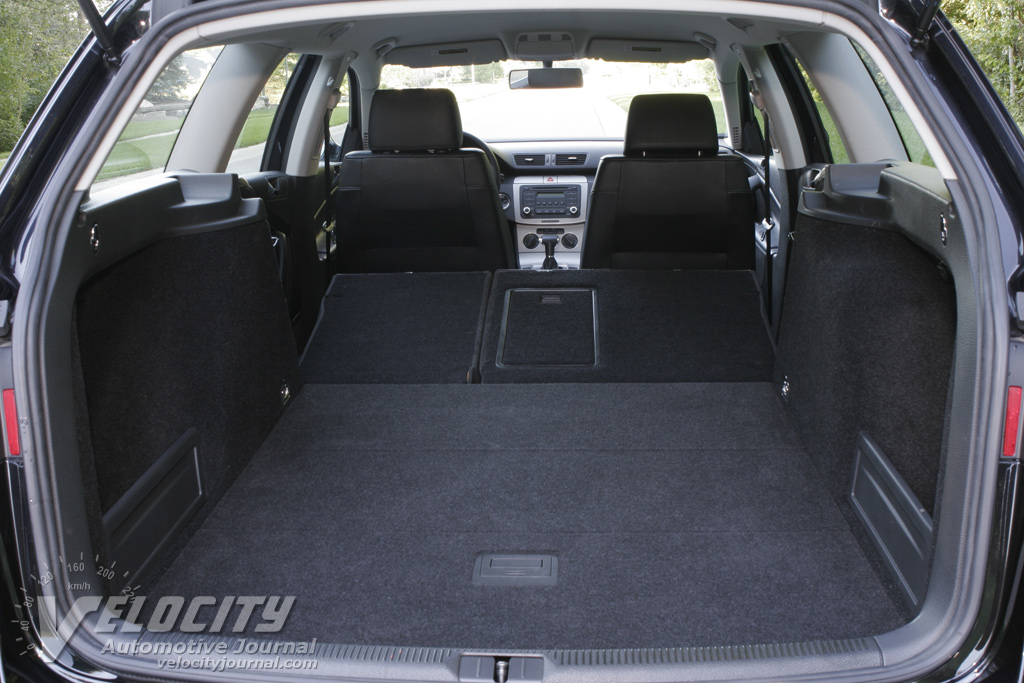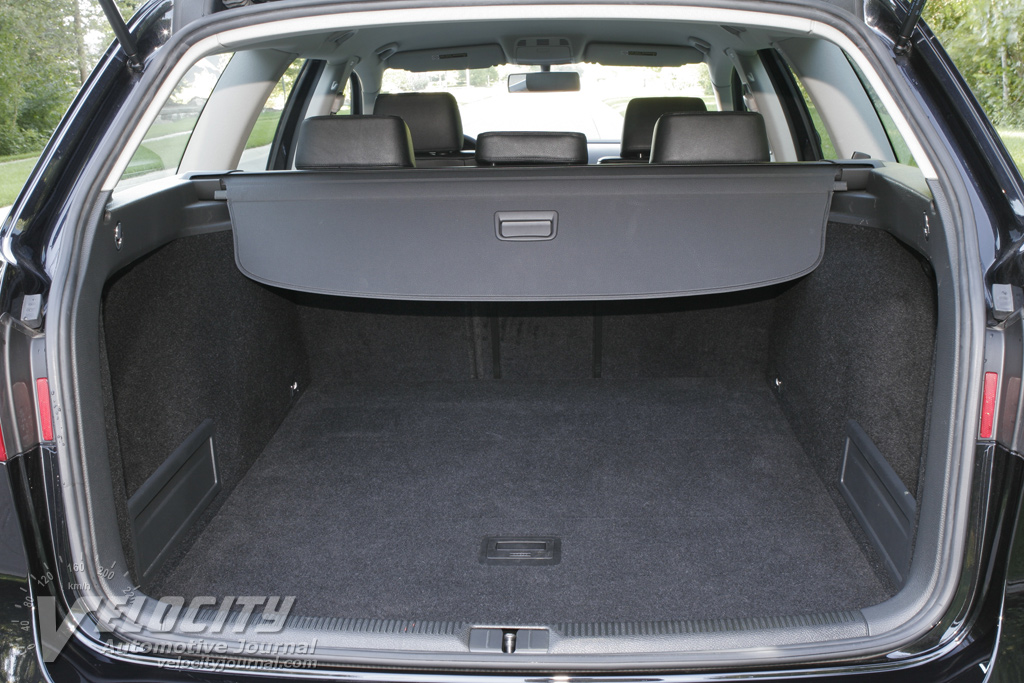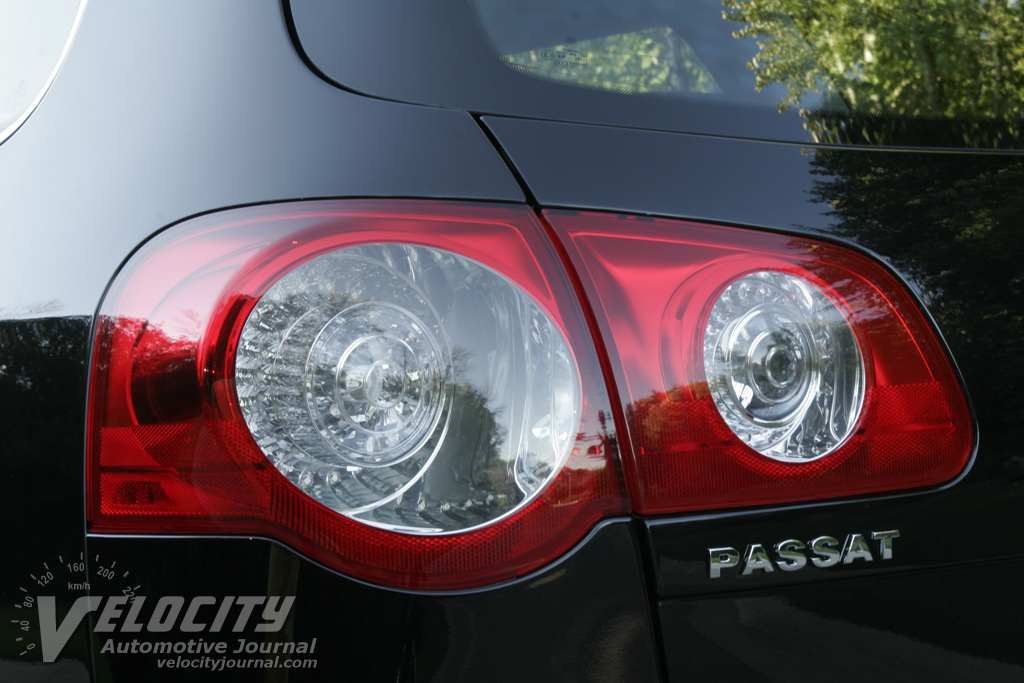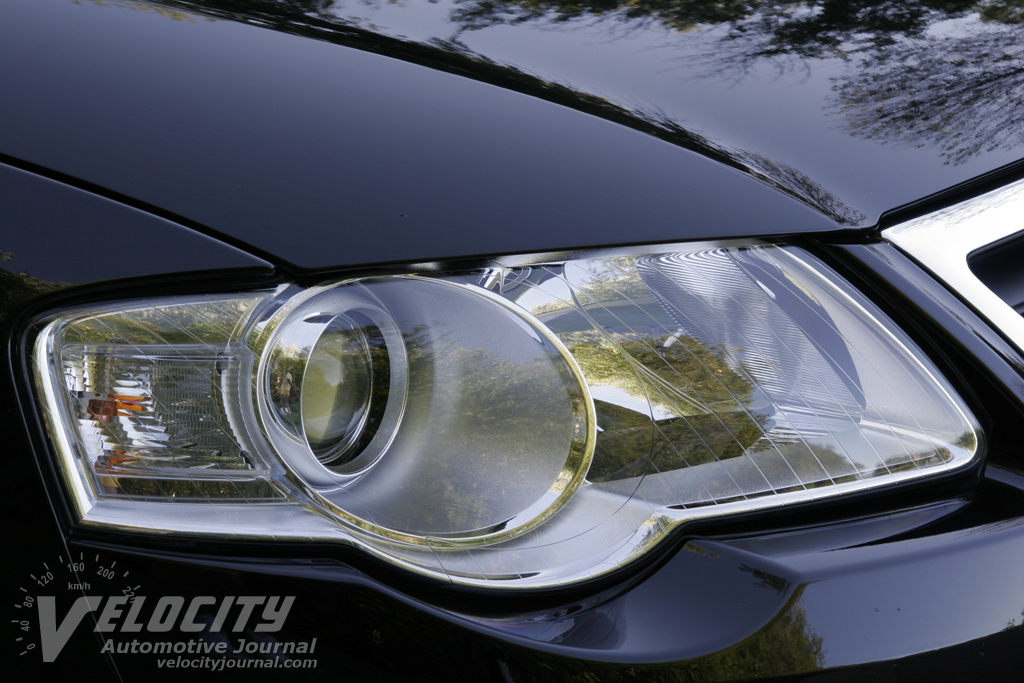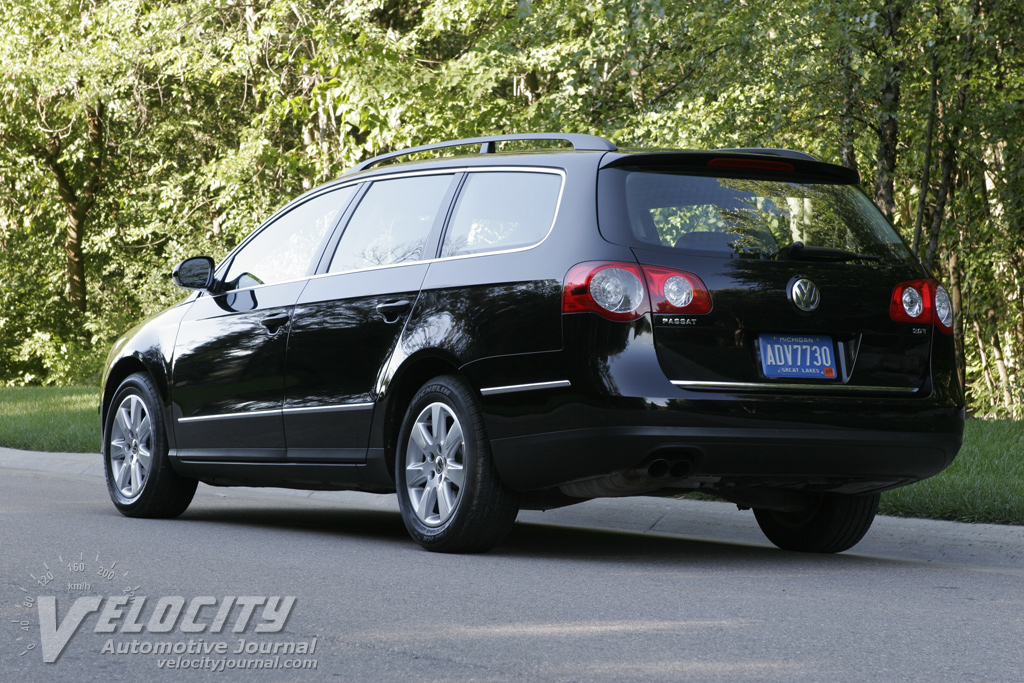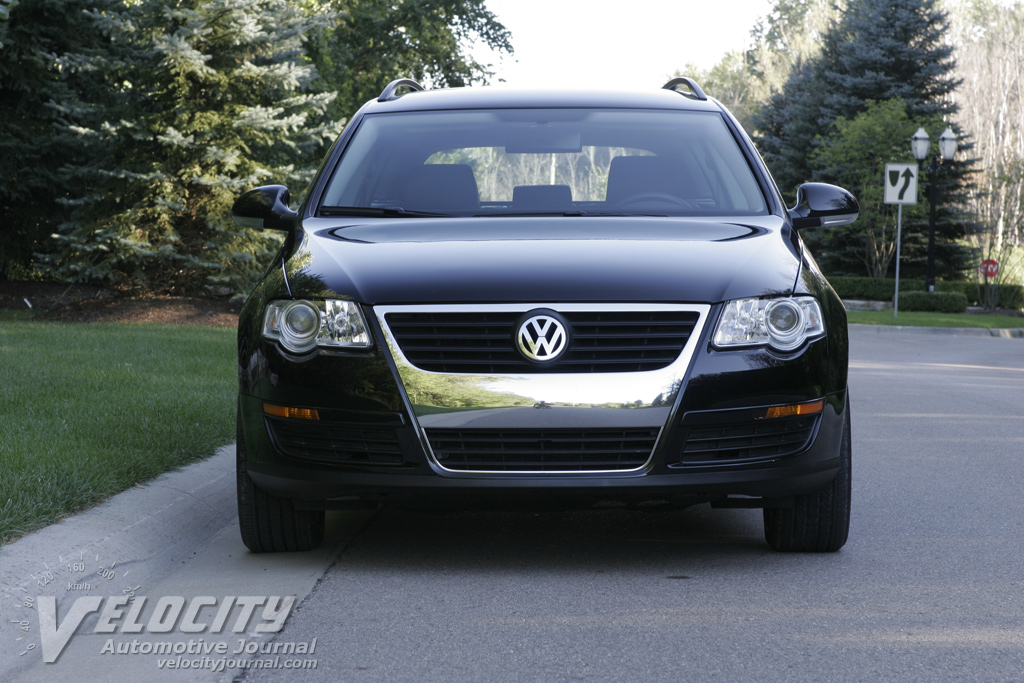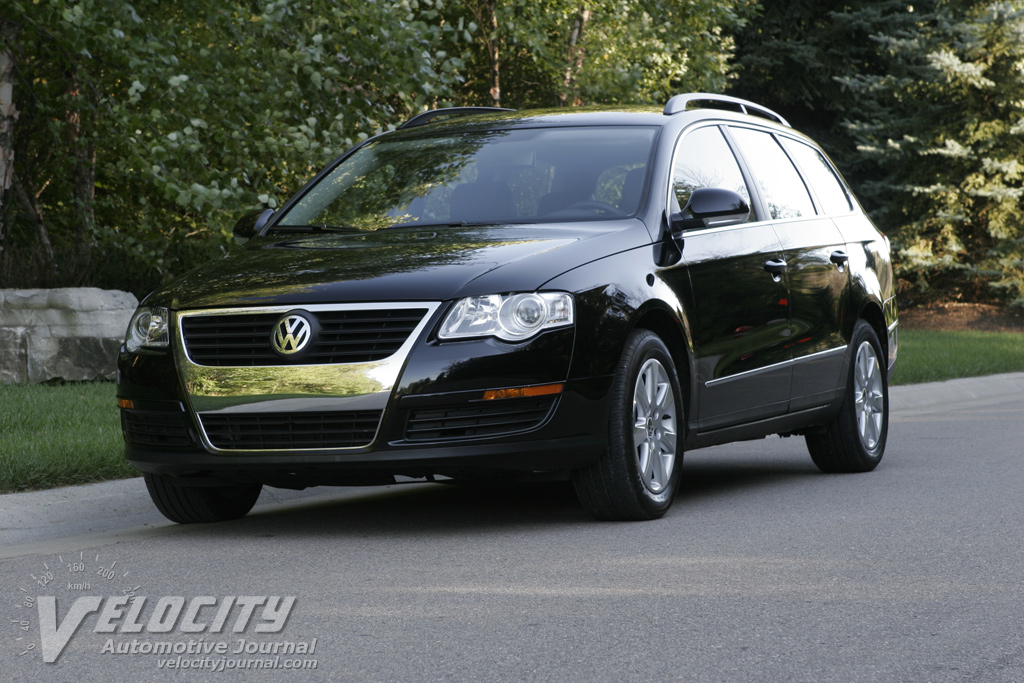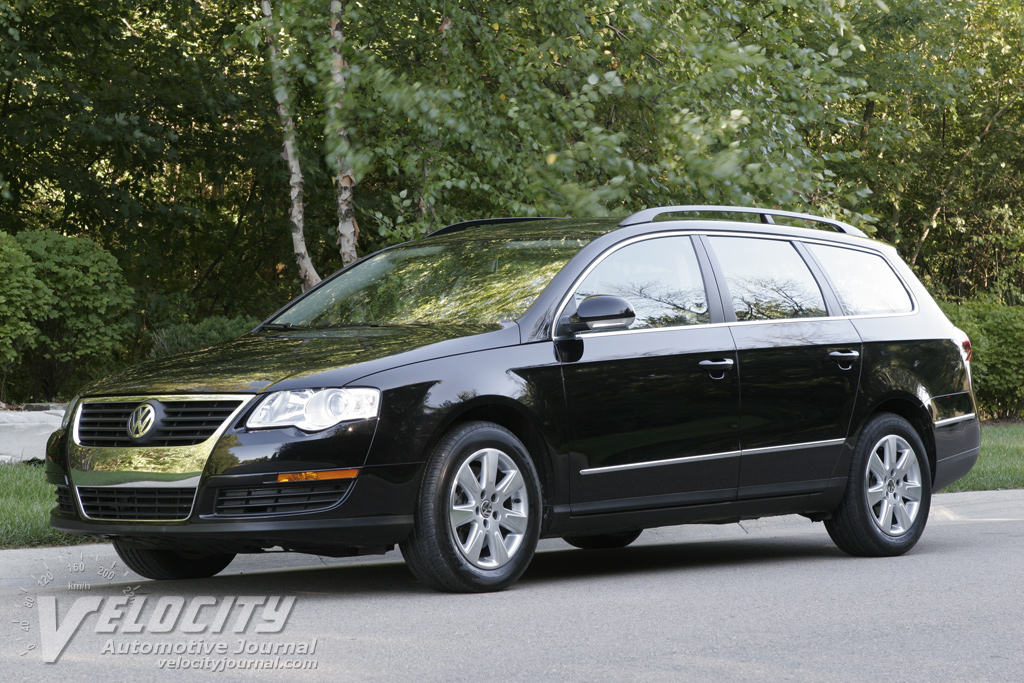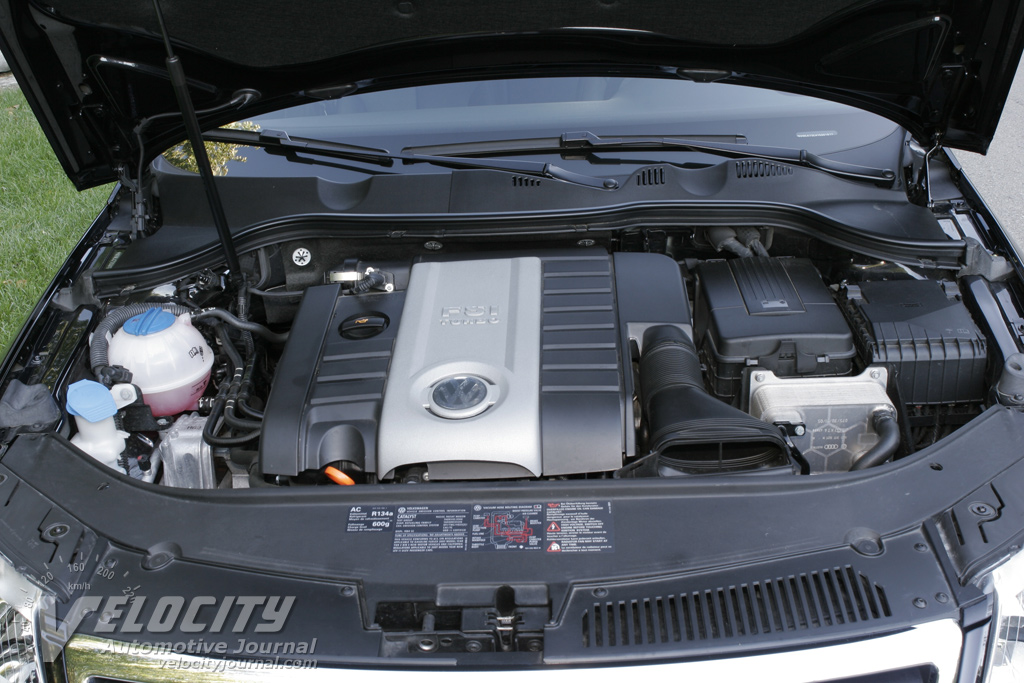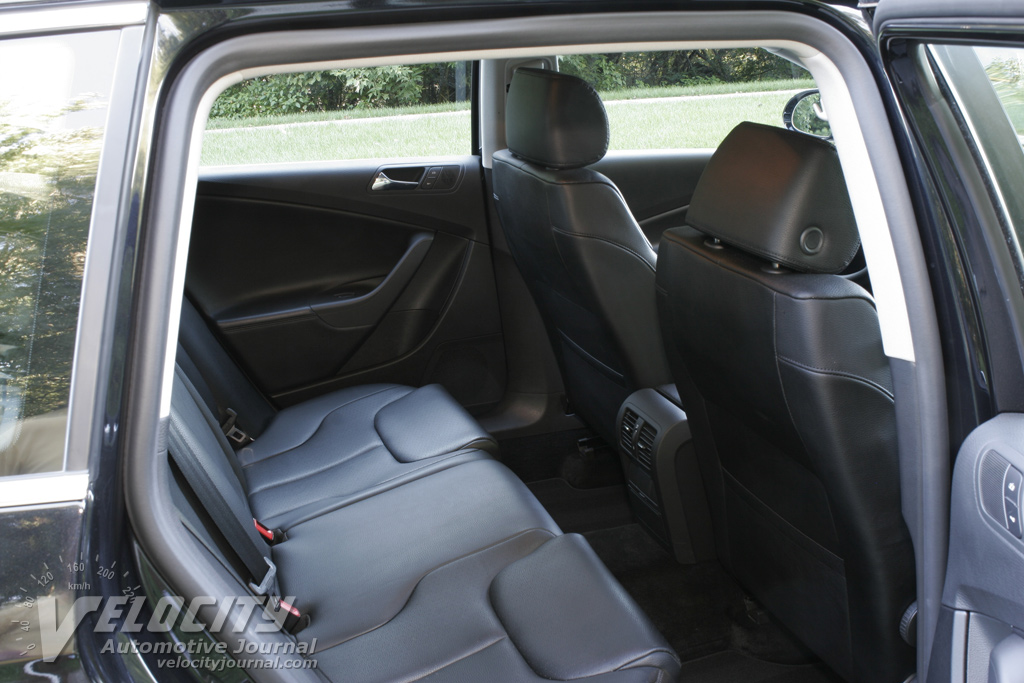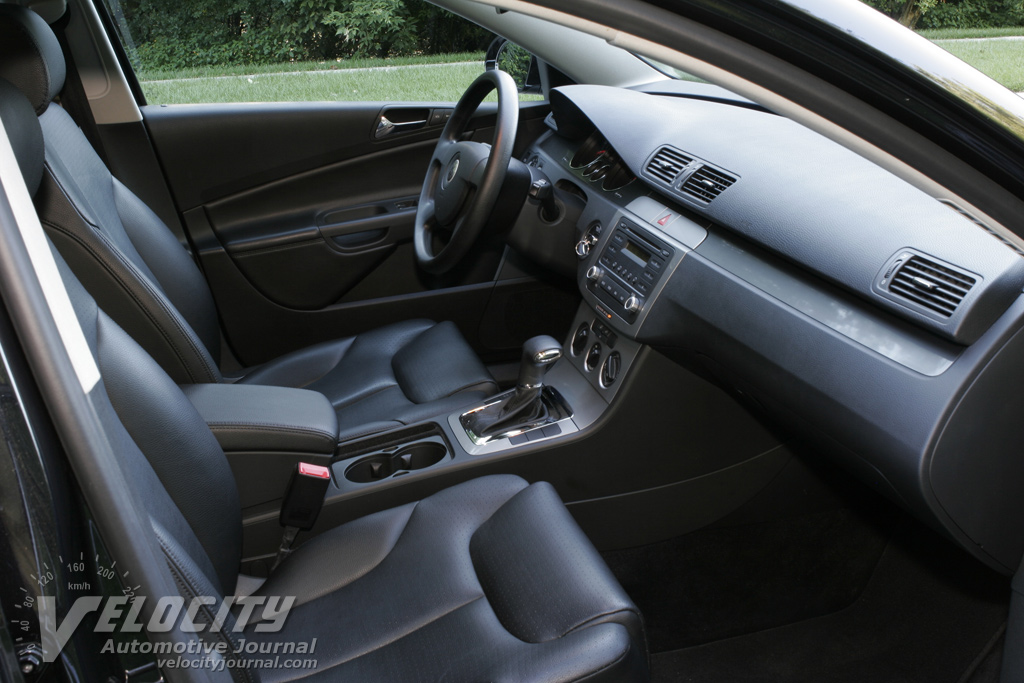2007 Volkswagen Passat Wagon 2.0T
08/24/2006
Shahed Hussain
VW has positioned the Passat as an affordable German midsize car. With its handsome styling, comfortable ride, and semi-reasonable pricing, the Passat has carved a unique niche at the upper end of the family sedan segment. Unlike most other entrants, the Passat is also available as a station wagon, which is an intriguing choice for families that need extra room, but not the bulk of a minivan or compact SUV. Of course, the Passat wagon's superior handling and ride are just an additional bonus.
As one might expect from VW, the Passat wagon exudes understated style. VW managed to achieve a sleek profile that is markedly different from the previously angular Passat wagon. A gracefully arced roof sweeps down to the rear hatch, which visually minimizes the bulk of the wagon profile. Standard 7-spoke alloy wheels are shod with 215/55-R16 Michelin Pilot HX all-season tires. Optional 17-inch or 18-inch alloy wheels are also available on 3.6L V-6 models.
Slide behind the wheel, and one immediately notices the minimal lateral support from the slippery black leatherette (vinyl) seats. It seems that VW designed the seats to accommodate wide American backsides, with no thought for adequate bolstering. Cloth upholstery would be more comfortable in summer and winter, and one wonders why VW chose vinyl instead (leather is optional). Most interior trim is black, although the dash and console have contrasting titanium-colored strips of textured plastic trim. Chrome adorns the door handles, gauge trim rings, and transmission bezel for a touch of flash in the interior.
Some signs of cost control include a polymer steering wheel rim instead of leather (leather wrapping is available as part of an option package), A/C with pseudo-climate control knobs, and a 10-way driver's seat with manual fore/aft and height adjustments (although rake and lumbar support controls are power operated). The passenger seat has all manual adjustments. It's clear that VW tried to de-content an inherently expensive vehicle. The Passat's doors close with a solid thunk, the body is feels stiff and solid, and the instrument panel could be shared with an Audi.
Front leg and headroom are plentiful, especially if no sunroof is ordered. Drivers over 6-foot tall should have no trouble getting properly situated in the Passat's front seat. A standard tilt/telescoping steering wheel should accommodate tall and short drivers alike. Rear seat comfort is acceptable for average size adults, although legroom is somewhat more restricted compared to the front seats. Headroom is plentiful in back, so tall adults should clear the headliner with ease. Rear passengers will appreciate thoughtful features such as rear ventilation ducts and a 12V power outlet. The 60/40 split rear seats fold down, but do not lay completely flat. A small opening between the seats allows skis to pass through, while the rear seats remain upright. The rear hatch has power-assisted closing that cinches up the last few millimeters. We're not quite sure why VW bothered, since it adds no real convenience. To close the hatch requires a firm shove with one hand, which may prove inconvenient if you are carrying a bag of groceries.
One slick feature is the (sort of) keyless engine start. Just push the entire fob into a rectangular slot in the dashboard, and the 2.0L turbo fires up. Press the fob again, and the engine stops. The novelty wears off quickly when you realize that this feature is only marginally less complex than turning a conventional key to start or stop the engine.
VW equips the base FWD Passat wagon with a 200-bhp/207 lb.-ft. 2.0L turbo shared with the sedan. The inline-4 is smooth and refined, although it feels slightly sluggish off idle until the turbo comes on boost. Torque steer is unnoticeable as the automatic transmission, ASR (Anti-Slip Regulation), and ESP (Electronic Stability Program) keep wheel shimmy to a minimum. Midrange response from the 2.0L feels comparable to a small V-6. Boot the throttle on the freeway, and the Passat wagon accelerates eagerly past 100 mph, while the engine note remains barely audible. We tested the wagon lightly loaded, so performance fully laden may not be as sprightly. Road and wind noise are subdued at speeds beyond 100 mph, so the driver can easily exceed posted speed limits unintentionally. For customers who desire more power or better traction, a 280-bhp 3.6L V-6 is available in FWD or AWD 4Motion(R).
Although the 6-speed Tiptronic(R) automatic has appropriately spaced ratios, it downshifts reluctantly yet slips into 6th gear at the earliest opportunity. Any spirited driving requires the gear lever to be moved to the "S" or Tiptronic (manual) mode. In the "S" setting, the transmission responds with faster response, and avoids 6th gear for faster acceleration. Oddly enough, even in Tiptronic mode, the automatic will kick down two ratios if the gas pedal is floored. Evidently, VW doesn't believe that the driver should have full control over the transmission, no matter which mode is selected.
Like most German cars, the Passat has superb, accurate steering that damps out road imperfections but still remains communicative. Steering effort is moderately heavy, but still quite reasonable. On the highway, the Passat Wagon tracks accurately at 90-100 mph, with minimal steering corrections required.
VW tuned the suspension settings to favor a quiet, comfortable ride. The Passat floats over some larger bumps, but the suspension never feels unsettled. Slightly stiffer dampers would keep the rear suspension tied down more effectively, but at the expense of ride comfort. Around curves, the Passat leans noticeably, with predictable mild understeer. Prospective owners will probably be perfectly satisfied with the Passat wagon's ride/handling compromise. Sport wagon buyers may prefer the A4 or A6 Avant wagons if they desire more taut suspension tuning.
The Passat Wagon is a compelling choice for midsize wagon buyers; admittedly a small market in the US. If you stay off the extensive (and expensive) option list, the base Passat Wagon 2.0T model should meet most customers' needs for a reasonably priced vehicle. We do wish that VW would ditch the standard vinyl upholstery and substitute cloth seats with better lateral support instead. But aside from that minor complaint, this VW fits the bill as a stylish, yet understated people and cargo hauler.

